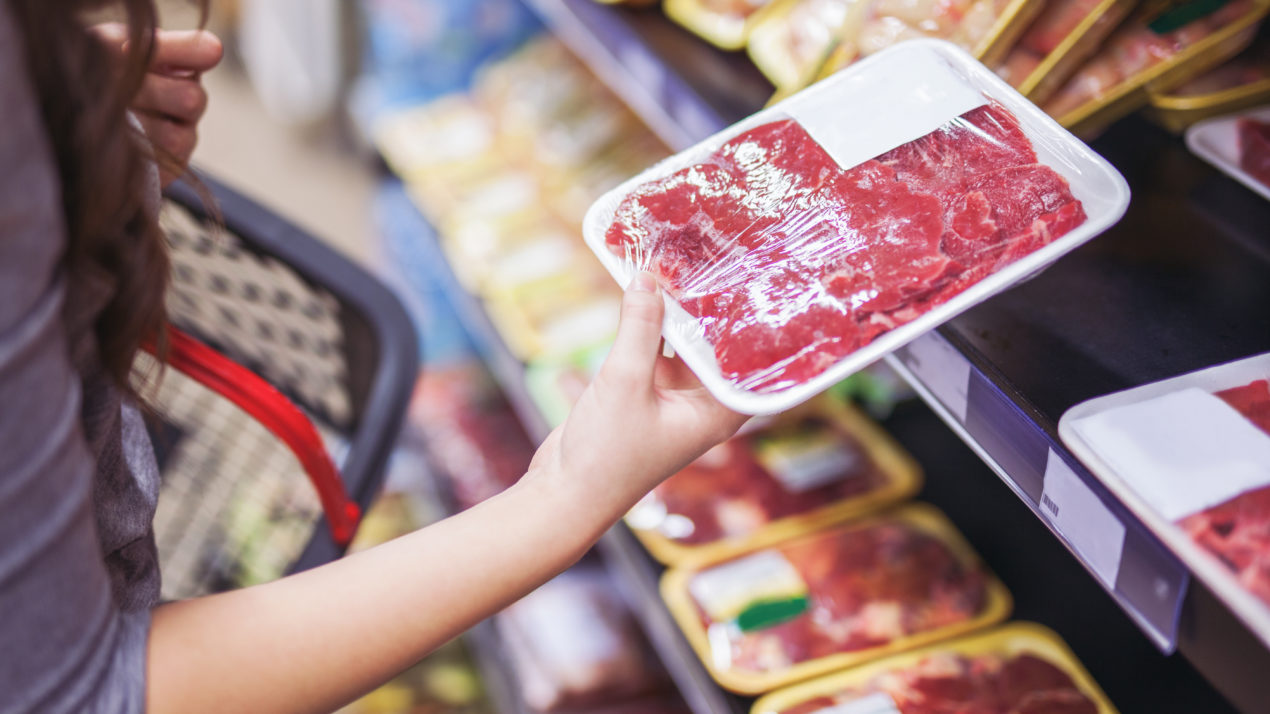
Prepared and written by Jeff Swenson, DATCP Livestock and Meat Specialist. The Market Update draws information from several sources, including trade publications, radio broadcasts, agricultural news services, individuals involved in the industry as well as USDA NASS and AMS reports.
■ The Wisconsin Department of Agriculture, Trade and Consumer Protection (DATCP) will be hosting a webinar for Wisconsin meat processors interested in learning about DATCP’s new meat processor grants on December 21, 2021 from 9-10 a.m. The webinar will cover the grant application, eligibility requirements, grant writing process, and more and attendees will be able to ask questions after the presentation concludes. The webinar will be recorded and made available on DATCP’s website to view any time.
The webinar will take place on Zoom. Registration in advance is appreciated but not required. To register for the webinar, visit https://www.zoomgov.com/meeting/register/vJItceuqrTMqE5mcnQyIMj6fNNLjd9Xhoxo.
■ Direct sales for fed cattle were slow to develop this week with sellers hoping for steady or higher prices and packers needing to purchase fewer cattle. Prices at local auction markets were steady to higher, even though nationally, fed cattle are being called $2.00 lower. As expected, last week’s harvest totals were lower at 668,000 head, 8,000 less than the previous week, but 4,000 higher than the same week last year. This will be the last full production week of the year, and the New Year typically brings lower demand for higher-end muscle cuts. Fewer cattle selling and the lower fed cattle prices have cattle futures under pressure as well. Fed cattle weights will likely increase due to holiday shortened harvest schedules and mild temperatures in cattle feeding regions. The beef cutout value continues to lose ground, posting at $260.26 on Wednesday, December 15, 2021. Beef demand has been strong and seasonal patterns have not always materialized in the past 22 months. At some point, consumers are likely to push back against higher prices and look to other proteins. Inflation concerns are top of mind. Wages have increased by 3.5 percent but are failing to keep up with 6.5 percent inflation.
■ Cash hogs were higher at midweek. Lean hog futures were sharply lower at midweek and most ag commodity futures saw red on Wednesday. Hog futures did open higher on Thursday and there are some thoughts a seasonal low may have been put in. Gains were seen in the pork carcass cutout this week with the higher value led mostly on the strength of hams. Last week’s harvest was 2.601 million head, 56,000 below the previous week and 154,000 less than the same week last year. Year-to-date hog harvest is 2.2 percent below 2020, but weekly harvests are now 5 to 6 percent below the comparable weeks last year. Domestic demand is still strong, and tighter supplies, coupled with strong exports to Mexico, should help the market heading in to 2022. Sow prices remain higher than typically seen this time of year. The USDA’s Daily Direct Sow and Boar Report posted the national weighted average for sows at $61.12/cwt on Wednesday on a live basis. The nation’s breeding sow herd shrunk by 300,000 head since the start of the COVID-19 pandemic, adding to the tighter supply of market hogs.
■ Choice beef breed steers and heifers at Wisconsin and surrounding state auction markets were mostly steady to higher at midweek. High-yielding, high-grading cattle brought $128.00 to $142.00/cwt with reports of some selling in the high $140.00s/cwt. Choice and Prime Holstein steers were mostly steady to $1.00 higher this week at $93.00 to $116.00/cwt. Some packages were still selling to $119.00/cwt with a few packages above. Silage fed, under finished, or heavy dairy breed steers brought $70.00 to $94.00/cwt. Dairy x beef steers were mostly $95.00 to $140.00/cwt. Cows were higher at $34.00 to $55.00/cwt. Blemish free and beef breed cows in fleshier condition sold into $60.00s/cwt. Doubtful health and thin cows were bringing $34.00/cwt and down. Dairy breed bull calves were steady, bringing $50.00 to $90.00.00/cwt with heavier, well cared for calves up to $140.00/cwt. Beef and beef cross calves were lower bringing up to $320.00/cwt. Market lambs were mixed, selling to $245.00/cwt. Feeder cattle sales were strong with exceptional demand for heavier cattle weighing 750 pounds and up. This trend continues for both beef breed feeders and Holstein steers.

